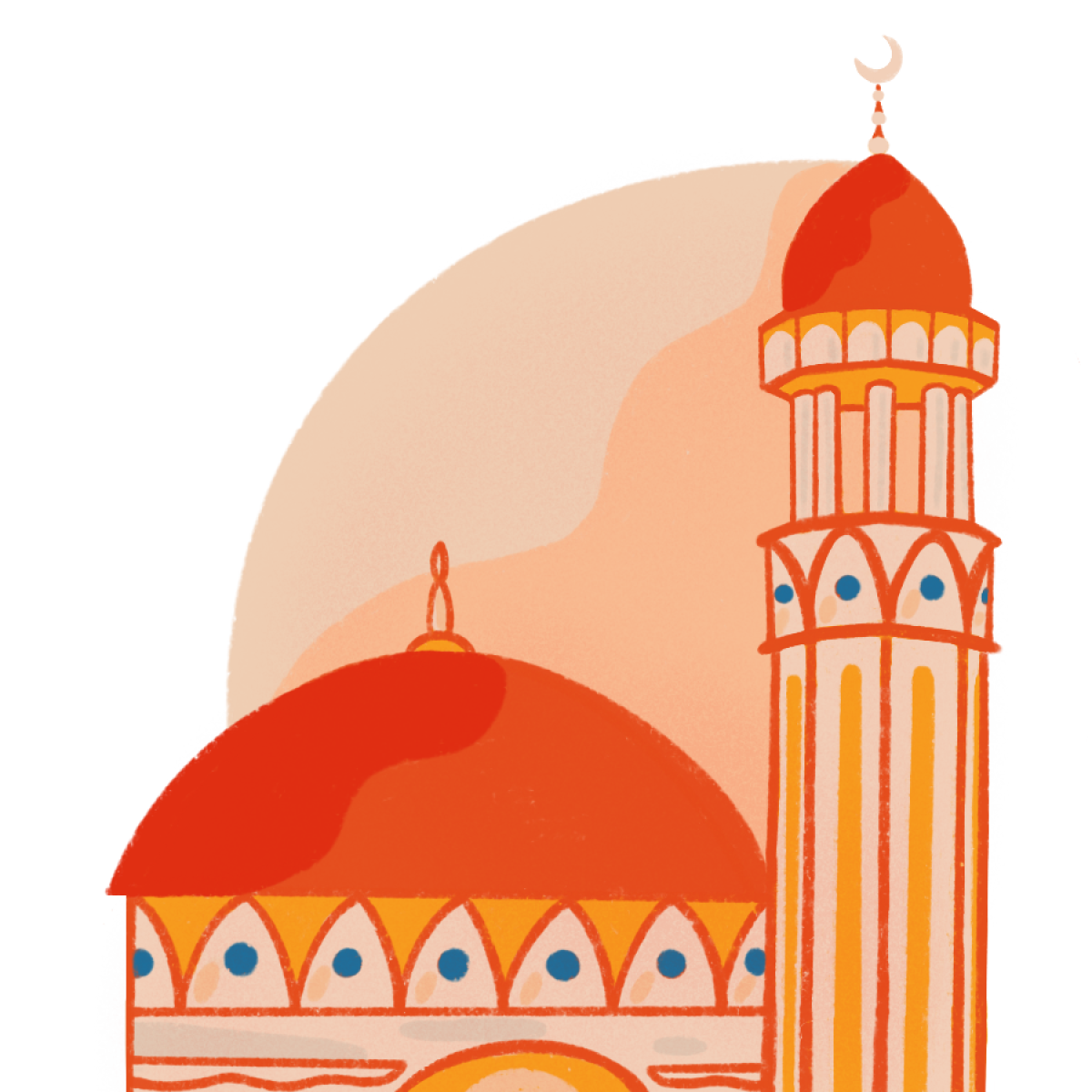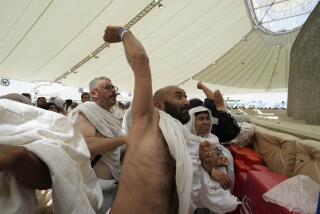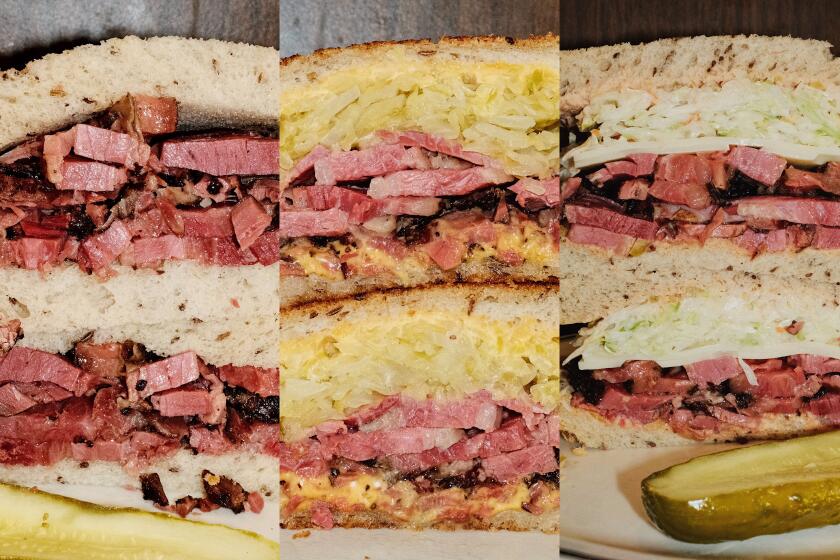Feasting and fasting: The meaning of the rituals of Ramadan

Fasting is a ritual practiced by all religions.
For Christians, it happens during Lent, the 40 days leading up to Easter when many abstain from eating foods of their choosing to emulate the time Christ spent in the Judean desert. For Muslims the daily fast during the month of Ramadan is more about purification than penitence. The fast is broken nightly at iftars, gatherings where the feasting and socializing are as important as the fasting that precedes them.
Ramadan starts with the sighting of the new moon on the ninth month of the year — Muslims follow the lunar calendar, and as a result the date moves yearly — and ends with the holiday Eid al-Fitr. It is the most important time of year in Islam, and the only one mentioned in the Quran because it was on Laylat al-Qadr, the 27th night of the month, that the holy book was sent down to the prophet Muhammad.
I remember the eerie sound of the tabbal, a drummer who roamed the empty streets of West Beirut, the Muslim part of the city where I grew up, just before dawn to wake the faithful so that they remember to have their suhur, the last meal before fast begins. It starts at sunrise, with not even a drop of water allowed until sunset, when the muezzin recites the adhan, or call to worship. I am still haunted by chorus of the different muezzins resonating from the minarets to mark the end of the daily fast.
Some Muslims break their fast with dates to follow the example of the prophet, who is reputed to have broken his with exactly three dates. Others do so with sweet drinks, while others opt for hot soup. They then pray before sitting down to iftar, which changes from one country to another. In Pakistan, the spread is practically the same as what people eat daily, in other places it includes dishes particular to that month. In the Levant, fattoush (a salad of toasted bread and herbs) and baba ghanouj or tahina (lemony tahini dip) are part of every iftar; in Zanzibar, once part of the Sultanate of Oman, sweet noodles are essential to the celebration.

In the Arabian Gulf, tharid is a daily staple during Ramadan. Reputedly the prophet’s favorite dish, it has layers of very thin cracker-like bread called regag topped with salona, a meat and vegetable stew. Fatteh is the Levantine version of tharid, made with layers of toasted or fried pita, boiled meat, chickpeas and garlicky yogurt, garnished generously with whole toasted pine nuts. The Egyptian version differs slightly in that it has no chickpeas. Instead, boiled rice is spread over the bread and often the meat is replaced with boiled sheep’s trotters, topped with a little tomato sauce, and finished with yogurt.
Sweets are a global fixture of Ramadan. They are offered to visitors with coffee or tea throughout the night, or taken as presents when visiting others, or to simply nibble on to restore the energy lost during the day. Sweets makers all over the Muslim world work around the clock to cater to the increased demand.
Ramadan is a time for atonement and — charity being one of the five pillars of Islam — a time to share one’s bounty with those less privileged.
Patrons subsidize iftar meals to be distributed in different ways to those in need all over the Islamic world. In Cairo, ma’edat al-rahman — “the tables of the merciful” — are laid on sidewalks ready for meals paid for by wealthy locals to be served as soon as the sun sets to the homeless, or those who simply do not have enough to provide for themselves and their family, or lonely people wanting company for iftar.
Where to break the fast for Ramadan »
The first time I came across one, it was in old Cairo. I walked past a group of men sitting at a long table laid with empty plates and glasses. The sun had not yet gone down and it wasn’t until the muezzin started the adhan that a group of men carrying bowls of food and bottled drinks approached the table to hand them out. I expected those seated to pounce on the food and drink given the day’s harsh fast but instead they patiently waited until all had a drink in front of them before taking their first sip. They then got up to pray, right on the pavement, before returning to the table and slowly beginning the feast.
The wealthier the patrons, the more people they can feed. In the Arabian Gulf, sheiks and sheikas, as well as people from merchant families bankroll hundreds or thousands of iftar meals daily. Some are cooked in catering kitchens and sent to mosques or tents set up in public squares for that purpose, while others are cooked in the courtyard of mosques. Often those cooking in the mosques will prepare h’riss (a wheat and meat porridge and an alms dish par excellence), another fixture of Ramadan in the Gulf.
One year I was in Abu Dhabi during Ramadan and I was able to visit one of the catering kitchens where iftar meals were being prepared. The chef running the kitchen was being paid by a sheik from the ruling family to prepare 3,000 meals daily. The chef told me the menu rotated throughout the month but there was always rice, meat, chicken or fish, crudites and a sweet, together with a soft drink and water. An hour before sunset, a van would take the meals to the magnificent white marble edifice of Sheik Zayed’s mosque.

At sunset, hundreds of people filed into the grounds of the mosque, the men taking their place on the grass along either side of long strips of plastic where the boxes containing the meals had been lined up; and the women and children at tables at a room outside the prayer hall inside the mosque.
Recipes for Iftar and Eid al-Fitr »
The scene was extraordinary — as in Cairo — the breaking of the fast happened in silence and in slow motion. The adhan first, then the opening of the boxes, then a few sips of water, followed by a prayer, then the meal by which point people started to liven up and began socializing with those near them despite most being strangers to one another.
There is something heartening about the contrast between the solemnity and austerity of the day’s fast and the joyfulness that followed the breaking of it, which is exactly what makes the month of Ramadan such a special time. Whether you are religious or not, Muslim or not, there is something inspiring about the way people give themselves over completely to the observance of a ritual that enhances their understanding and experience of their faith.

More to Read
Eat your way across L.A.
Get our weekly Tasting Notes newsletter for reviews, news and more.
You may occasionally receive promotional content from the Los Angeles Times.










